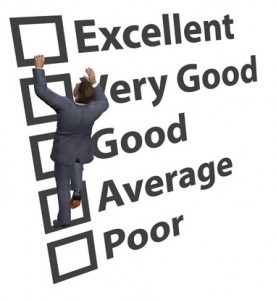“When I think of who my core team members are, I listen to my inner voice. Those with consistently reliable output, not episodic, and a positive, supportive attitude, they embody the core of my team. They are responsible for themselves and they have a positive effect on others. Give me a team in which even 50 percent fit the above description – and I will move mountains!”
Davis Holloway
Consider ‘normal’ distribution. It states that in most situations with a population of any real size, we can pretty much count on results being distributed across a bell-shaped curve with 15 percent at one end, 15 percent at the other, and the rest somewhere in the middle. It stands to reason then that if 70 percent of our people fall into a particular performance grouping, then that’s where we would spend 70 percent of our time and energy. Right? Wrong. When we’ve asked thousands of leadership workshop participants where they spend the majority of their time – their answers invariable reflect a theme of ‘focusing way too much on one or two problem situations that just won’t go away’!
In fact, the distribution curve in leading others is made up of only 7 to 10 percent at the extremes of high and low performance, and some 90 percent at the top of the curve! In practice, we find that over 90 percent of our capacity is maintained by very little of our attention. What might we achieve by taking on a new leadership focus? Over 90 percent of our capacity is waiting on us – waiting to be asked, waiting to engage. The core of your team is waiting…on you. Let’s take a look at how to first free yourself as a resource, and then how to identify the ‘core’ of your team.
I’ll start at the low end of the distribution curve where, ironically, we can free up maximum capacity. When it comes to confirmed performance problems, there is an inverse relationship between pace and pain; the quicker we address a problem, the sooner the pain dissipates. I have never heard a frontline manager say, ‘I fired that person way too quickly, I should have let it go on much longer’. Never. Ever. The best method to identify when to move from coaching to discipline involves the ‘rule of three’ – the lowest number of data points it takes to establish or discard a pattern. If you know of three examples of willful nonperformance, there is a problem. Get involved, now.
Let me add one caution; seek discipline, not punishment. Resolution, not revenge. The most common trap we fall into involves waiting too long and letting tension get way too high before we address an obvious problem. At that point issues come up with a heavy emotional spring-load and usually don’t end well. Follow the pace/pain formula and address it now. The purpose is resolution and completion – for you. This will remove the situation from your radar; it will liberate you to concentrate on the solid citizens that make up the core of your team.
In my next blog I’ll give you some very practical tips on how to more accurately target your influence by identifying your team’s solid citizens.


